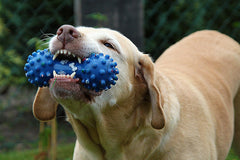
The Scottish Fold is one of the most famous cat breeds that, if you have not laid eyes on yet, you will fall in love with the moment you see their adorable little faces.
Not to mention their ears that appear to be squished against their head, as if they weren’t already cute enough. They're also some of the friendliest cats!
Beyond this fluffy cat breed's adorableness, there is a lot to know about this special little breed of the cat if you have your heart set on adopting one. It’s important to know a little about a feline's personality traits as well as potential health problems before deciding to adopt. Knowing about this history as a breed is also a good thing, and not to mention, a good conversation starter.
The History of this Floppy Ear Cat
Interestingly enough, this breed’s heritage can be traced directly back to a barn cat named Susie who lived in Scotland and worked as a mouser. Susie was born in 1961, with a litter of what appeared to be “normal” kittens. She was the only one whose ears were folded down in such an interesting way. Susie was then bred with domestic shorthair cats, producing a hybrid breed whose ears were also folded down, just like Susie’s.
Personality of the Scottish Fold
First and foremost, the most noticeable and lovable personality trait about these adorable little short-eared cats is that they love their humans. They love to be around them and be involved with whatever it is that their human is doing at that very moment.
With that fact being established, it goes without saying that this breed of cat would easily suffer from separation anxiety if their owner were to leave them alone for too long or even just too frequently. They love having companionship, even if it is having another cat around to be with while their human is away.
Another interesting personality quirk of these unique little cats is that they have been known to pose in odd ways. For instance, some owners of this floppy-eared cat have reported them laying out on the floor with all legs extended as if they were a frog.
Scottish Fold Health
Scottish folds, whether they are purebred or of a mixed breed, aren’t known for having too many health problems to speak of. The average cat lifespan of the Scottish Fold is around 15 years.
That’s just about the average life span of a healthy house cat who’s been loved and cared for the way they should be. There are also ways to help your cat live a longer life.
Otherwise, this cat with rounded ears is known to suffer from common diseases such as degenerative joint diseases as well as a heart disease called “hypertrophic cardiomyopathy.” Degenerative joint disease is common in many breeds of cats, and not unmanageable if you work with your vet to learn how to care for your cat, should they develop this issue in the future.
The same goes for hypertrophic cardiomyopathy, on the chance that your cat develops a problem such as this. It has not been found to be something that a cat will inherit, more so just a chance occurrence.
Another health consideration to keep in mind is that the tail of the Scottish Fold tends to become rather stiff over time. Meaning, as you begin to notice this happening with them, you will want to be mindful about handling their tail gently.
You should also consult their veterinarian as soon as you notice them developing this tail stiffness. That way you can take any preventative measures, as well as do whatever else is within your power to keep them happy and comfortable.
Diet Considerations
For starters, this breed has a naturally round look about it. They can easily become overweight, so proper diet management is key when caring for a Scottish Fold. It's best to give your feline friend a vet-recommended cat diet. Obesity in any breed of Feline can open the door to many problems, especially the ones listed above.
Grooming a Scottish Fold
Aside from its distinct floppy ears, the Scottish fold is also known for its thick, fluffy fur coat. Although their fur coat is also dependent upon whether they are a mixed breed, and what other breeds the Scottish Fold parent bed with.
Grooming is a part of cat care. If you adopt a Scottish fold with a coat of fur that is thick and luscious like that of a Mainecoon you will want to be sure that you are brushing their fur a couple of times per week. Doing this you are helping to prevent mats or tangles from forming. Brushing also helps to distribute their natural oils throughout their fur, keeping it shiny and hydrated.
Conclusion
The Scottish Fold came to be from a one in a million mutation. Thanks to Suzie and her adorable folded ears, we now have the breed that we know today as the Scottish Fold. They are a breed of cat that is perfect for anyone who spends a lot of time at home and would love to spend that time side by side with a feline companion. Cats make for a great first pet, so if you're looking for a fluffy feline companion, you'll be happy to know that the Scottish fold cats are lovable, friendly, and playful.
They have a small handful of health considerations to keep in mind if you are considering adopting a Scottish Fold. However, these health problems are rather easy to manage or even prevent all together through proper diet as well as regular visits with the vet. By doing this you can ensure that you and your Scottish Fold will live a long and healthy life together.
How much are Scottish fold cats?
Are Scottish fold cats hypoallergenic?
Are Scottish folds cuddly?
Check out our blog and follow me on LinkedIn to stay up-to-date!




